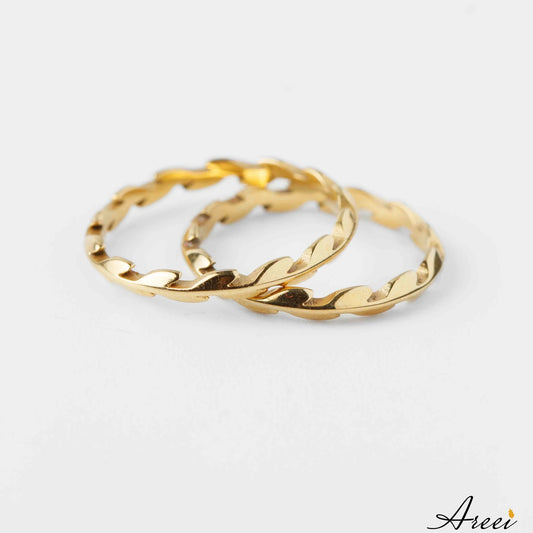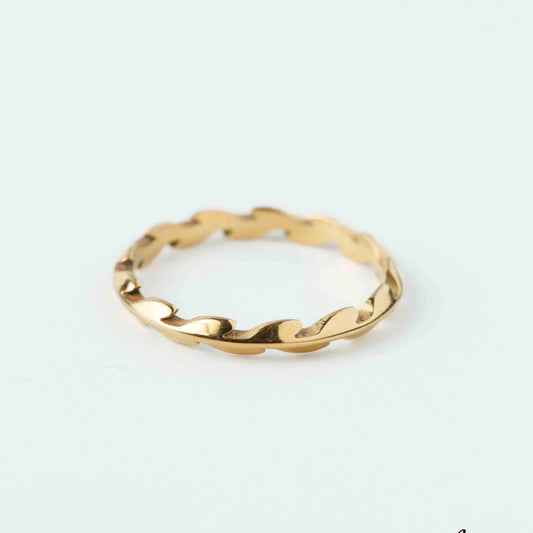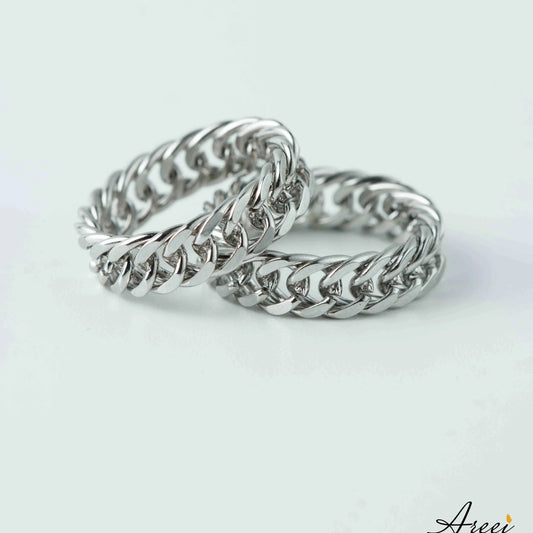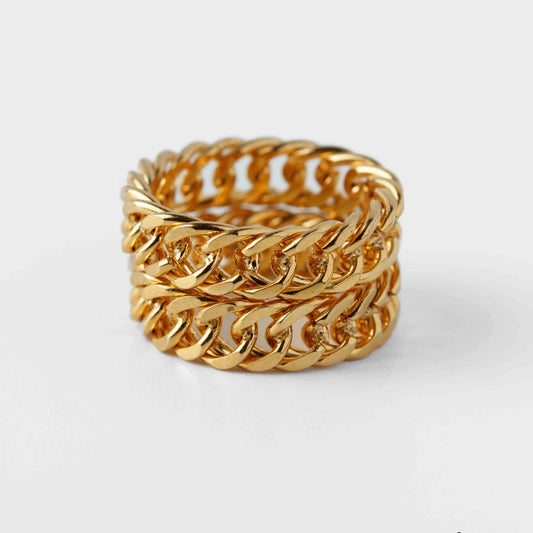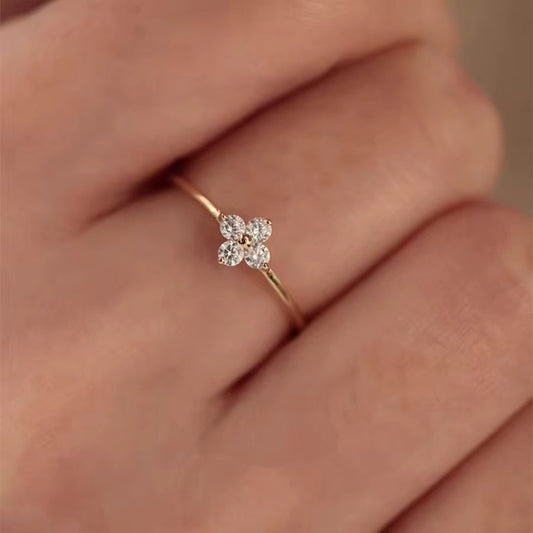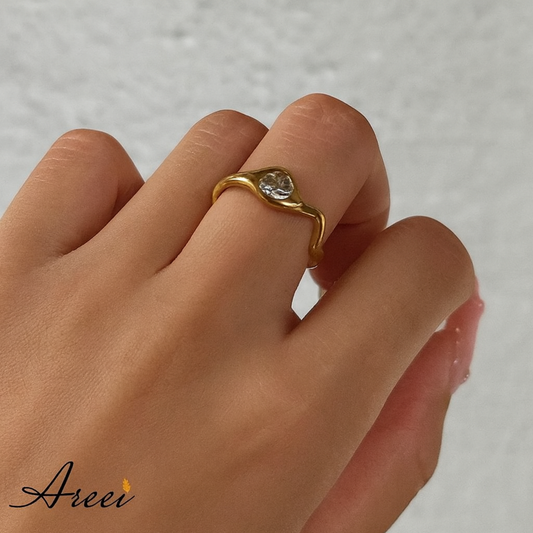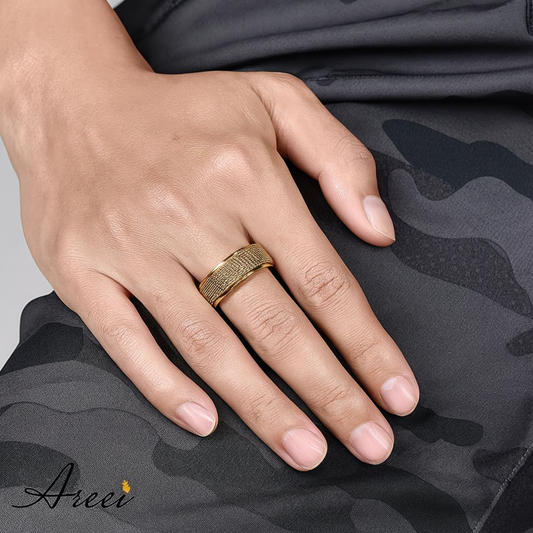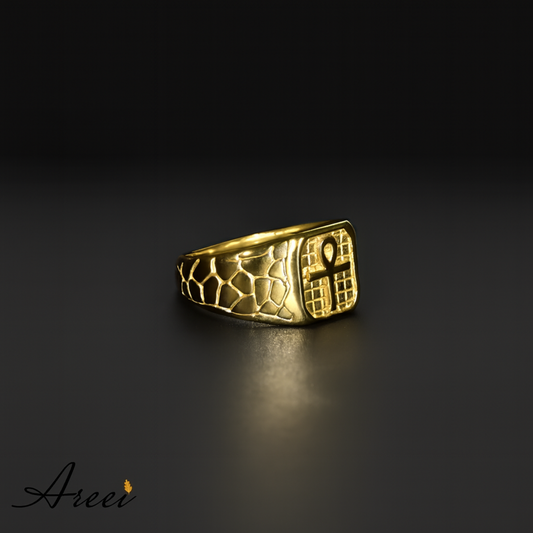Choosing the perfect wedding ring style is one of the most personal decisions you'll make. From classic solitaire settings to modern halo designs, understanding different ring styles, diamond shapes, and stone types will help you find the ideal symbol of your love. This comprehensive guide explores every wedding ring style to help you make an informed choice.
Classic Wedding Ring Styles and Settings
Solitaire Wedding Rings
The solitaire remains the most popular wedding ring style, featuring a single centre stone in a simple setting. This timeless design allows the diamond or gemstone to take centre stage, maximising its brilliance and visual impact. Solitaire settings work beautifully with any diamond shape and offer versatility for pairing with wedding bands.
Popular solitaire variations:
- Four-prong solitaire: Creates a classic, elegant appearance
- Six-prong solitaire: Offers extra security for larger stones
- Bezel solitaire: Provides a modern, protective setting
- Cathedral solitaire: Features arched metalwork for added height
Halo Wedding Rings
Halo wedding rings feature a centre stone surrounded by a circle of smaller diamonds or gemstones. This style creates the illusion of a larger centre stone whilst adding exceptional sparkle. Halo settings work particularly well with round, oval, and cushion-cut diamonds.
Halo style variations:
- Classic halo: Single row of diamonds around the centre stone
- Double halo: Two concentric rows of diamonds for maximum sparkle
- Vintage halo: Incorporates milgrain detailing and intricate metalwork
- Cushion halo: Specifically designed for cushion-cut centre stones
Three-Stone Wedding Rings
Three-stone rings, also known as trilogy rings, feature a centre diamond flanked by two smaller stones. This meaningful style represents the past, present, and future of your relationship. The side stones can be the same shape as the centre stone or different shapes for added visual interest.
Three-stone configurations:
- Graduated three-stone: Centre stone larger than side stones
- Equal three-stone: All three stones the same size
- Mixed-shape three-stone: Different shapes for variety
Diamond Shapes and Their Characteristics
Round Cut
The round brilliant cut is the most popular diamond shape, accounting for over 60% of all diamond sales. This classic shape offers maximum brilliance and fire, making it perfect for solitaire and halo settings. Round diamonds work well with any wedding ring style.
Princess Cut
Princess cut diamonds feature a square shape with pointed corners and brilliant-cut faceting. This modern cut offers excellent sparkle and works beautifully in solitaire, halo, and three-stone settings. Princess cuts require protective settings due to their pointed corners.
Emerald Cut
Emerald cut diamonds feature a rectangular shape with step-cut faceting and cropped corners. This elegant cut emphasises clarity and offers a sophisticated, vintage appeal. Emerald cuts work particularly well in Art Deco-inspired settings.
Oval Cut
Oval diamonds combine the brilliance of round cuts with an elongated shape that appears larger than round diamonds of the same carat weight. This versatile shape works beautifully in solitaire, halo, and vintage settings whilst creating a flattering appearance on the finger.
Cushion Cut
Cushion cut diamonds feature a square or rectangular shape with rounded corners and large facets. This romantic cut offers excellent brilliance and works particularly well in vintage-inspired and halo settings. Cushion cuts come in square and rectangular variations.
Pear Cut
Pear-shaped diamonds combine the brilliance of round cuts with the elegance of marquise cuts. This unique shape creates a distinctive, sophisticated appearance and works beautifully in solitaire and three-stone settings. Pear cuts require careful setting to protect the pointed tip.
Marquise Cut
Marquise diamonds feature an elongated shape with pointed ends, creating a dramatic, regal appearance. This cut maximises carat weight and creates the illusion of longer, more slender fingers. Marquise cuts work well in vintage and contemporary settings.
Asscher Cut
Asscher cut diamonds feature a square shape with step-cut faceting and deeply cut corners. This vintage-inspired cut offers a unique, geometric appearance with excellent clarity display. Asscher cuts work particularly well in Art Deco and vintage settings.
Heart Cut
Heart-shaped diamonds represent the ultimate symbol of love, featuring a distinctive heart shape with excellent brilliance. This romantic cut works beautifully in solitaire settings and makes a meaningful choice for wedding rings.
Hexagon Cut
Hexagon cut diamonds feature six equal sides creating a geometric, contemporary appearance. This unique cut offers a modern alternative to traditional shapes whilst maintaining excellent brilliance. Hexagon cuts work particularly well in minimalist and contemporary settings, appealing to couples seeking distinctive, architectural beauty in their wedding rings.
Gemstone Alternatives to Diamonds
Sapphire Wedding Rings
Sapphires offer exceptional durability and come in virtually every colour except red. Blue sapphires remain the most popular choice, offering royal elegance and symbolic meaning. Pink, yellow, and white sapphires provide alternative colour options.
Emerald Wedding Rings
Emeralds offer rich green colour and historical significance, representing rebirth and love. These precious gemstones work beautifully in vintage-inspired settings and three-stone designs. Emeralds require careful handling due to their relative softness.
Ruby Wedding Rings
Rubies symbolise passion and love, offering intense red colour and exceptional durability. These precious gemstones work well in classic and vintage settings and provide a bold alternative to traditional diamonds.
Modern Wedding Ring Styles
Tension Settings
Tension settings hold the centre stone in place using the spring tension of the metal band. This modern setting creates the illusion of a floating stone and works particularly well with round and princess cut diamonds.
Bypass Settings
Bypass settings feature a band that curves around the centre stone, creating a contemporary, flowing appearance. This style works well with various diamond shapes and offers a unique alternative to traditional settings.
Split-Shank Settings
Split-shank settings feature a band that divides into two or more strands near the centre stone. This design creates visual interest and allows for additional diamond accents along the band.
Twisted Band Settings
Twisted band settings feature intertwined metal strands that create texture and visual movement. This style works beautifully with solitaire and halo settings and adds romantic appeal.
Band Styles and Widths
Thin Bands (1.5-2mm)
Thin bands create a delicate, feminine appearance and make centre stones appear larger. This style works particularly well with smaller diamonds and vintage-inspired designs.
Medium Bands (2.5-3.5mm)
Medium width bands offer the perfect balance between delicate and substantial appearance. This versatile width works well with most diamond shapes and setting styles.
Wide Bands (4mm+)
Wide bands create a bold, contemporary appearance and provide excellent stability for larger centre stones. This style works particularly well with modern settings and substantial diamonds.
Tapered Bands
Tapered bands gradually narrow from the centre stone towards the back, creating visual flow and comfortable wear. This style works well with various setting types and diamond shapes.
Setting Height Considerations
Low-Profile Settings
Low-profile settings sit close to the finger, offering practicality for active lifestyles. These settings work well with bezel and tension settings and provide excellent protection for the centre stone.
Standard Height Settings
Standard height settings raise the centre stone approximately 5-7mm above the finger, allowing proper light entry for maximum brilliance. This height works well with most setting styles.
High-Profile Settings
High-profile settings elevate the centre stone significantly above the finger, creating dramatic presence and allowing maximum light entry. Cathedral and high-set solitaire styles fall into this category.
Colour Combinations and Metal Choices
Yellow Gold Settings
Yellow gold provides warm, traditional appeal and works beautifully with diamonds and coloured gemstones. This classic metal choice complements most skin tones and offers timeless elegance.
White Gold Settings
White gold offers a modern, sophisticated appearance that enhances diamond brilliance. This versatile metal choice works well with contemporary and vintage styles.
Rose Gold Settings
Rose gold provides romantic, warm appeal and has gained tremendous popularity in recent years. This unique metal choice works particularly well with vintage-inspired and halo settings.
Platinum Settings
Platinum offers the ultimate in luxury and durability, providing a naturally white appearance that never requires re-plating. This premium metal choice works well with all setting styles.
Mixed Metal Designs
Mixed metal designs combine different metals within the same ring, creating unique visual interest and versatility. Popular combinations include yellow gold with white gold or rose gold with platinum.
Choosing the Right Style for Your Lifestyle
Active Lifestyle Considerations
For active lifestyles, consider low-profile settings, bezel settings, and durable gemstones. Avoid high-set stones and delicate details that might catch on clothing or equipment.
Professional Requirements
Some professions require practical ring choices. Consider flush-set stones, smooth bands, and comfortable widths that won't interfere with gloves or equipment.
Personal Style Preferences
Your personal style should guide your choice. Classic personalities often prefer solitaire and three-stone styles, whilst fashion-forward individuals might gravitate towards halo and vintage designs.
Seasonal and Trend Considerations
Current Trend: Oval and Pear Shapes
Elongated diamond shapes like oval and pear cuts are experiencing tremendous popularity, offering unique beauty and the appearance of larger size.
Emerging Trend: Coloured Gemstones
Couples increasingly choose coloured gemstones like sapphires and emeralds for their wedding rings, creating personalised and meaningful designs.
Timeless Choices
Classic styles like solitaire and three-stone rings never go out of fashion, making them safe choices for long-term satisfaction.
Create Your Perfect Ring with Our Bespoke Service
Whilst this guide covers popular wedding ring styles, sometimes you envision something truly unique that doesn't fit into traditional categories. That's where our bespoke engagement ring service comes in. We specialise in creating one-of-a-kind rings at half the current market value, whether you prefer natural diamonds, lab-grown diamonds, moissanites, or even cubic zirconia.
Our team handles everything from initial concept to final creation, taking the stress out of designing your perfect ring. Whether you have a clear vision or need guidance exploring different possibilities, we'll work with you to create a ring that matches both your dreams and your budget. Every bespoke ring is crafted to suit your personal style and preferences, ensuring your wedding ring is as unique as your love story. Check out our bespoke service here
Conclusion
Selecting the perfect wedding ring style involves understanding the interplay between diamond shapes, setting styles, and personal preferences. Whether you prefer the classic elegance of a solitaire, the sparkle of a halo, or the meaning of a three-stone design, the right style exists to symbolise your unique love story.
Consider your lifestyle, personal style, and long-term satisfaction when making your choice. The perfect wedding ring combines beauty, meaning, and practicality to create a lasting symbol of your commitment. Take time to explore different combinations of shapes, stones, and settings to discover the style that speaks to your heart.


